Art: Geiriau Diflanedig/The Lost Words in St Davids
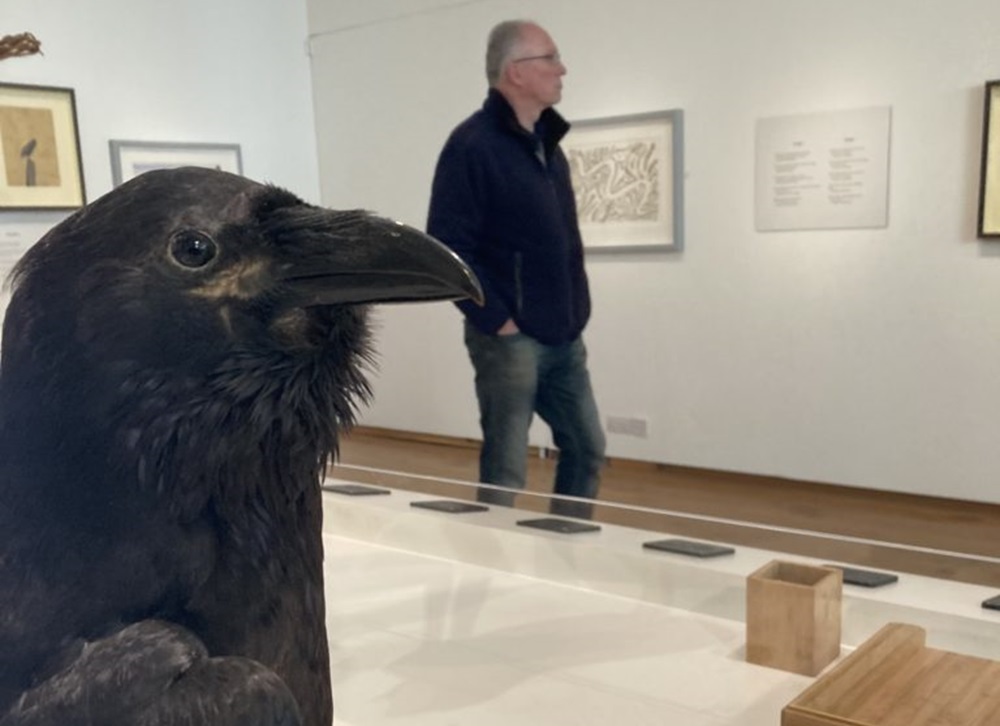
Jon Gower
When the Pembrokeshire artist Jackie Morris had an idea for a book which would include words lost from the Junior Dictionary she had no idea it would take off in the way it did.
Soaringly successful is probably the best way to describe The Lost Words – it’s a bestseller, there’s a copy of it in every school in Scotland and, in its Welsh language incarnation, Geiriau Diflanedig, every one in Wales.
And now there’s a pair of attendant exhibitions, one in Yr Ysgwrn near Trawsfynydd and the other in Oriel y Parc near St Davids.
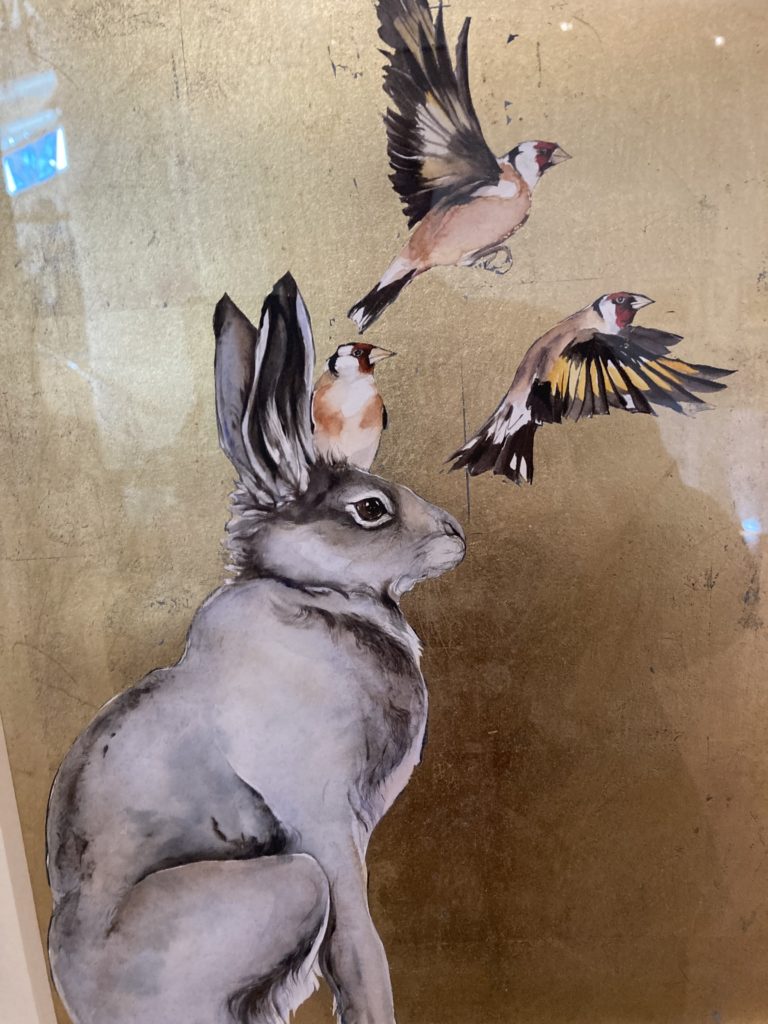
In the Pembrokeshire version you can not only enjoy the art but also learn about local words for nature that have been lost or tumbled out of usage.
There was a time when cowslips were known locally as “paugles” and magpies called “pyatts.” Other near-forgotten words include “cutty” for wren, “scroyles” for the bramble – where you can often find the cutties – and “cocky-evet,” a local word for newt.
And there are local variations and dialect names in Welsh, too such as “crig “for heather, rather than the standard “grug” and the evocative “bacse’r brain” for bluebells, more commonly known as “clychau’r gog.”
Such words are important, as the poet Mererid Hopwood, whose work graces Geiriau Diflanedig avers: ‘Saving words and language matters. It matters because they are more than just sounds. They are windows that enable us to see and understand the world about us. A bluebell and a dandelion may both be flowers, but without being called by their own names, they becomes somehow less visible, less important, more prone to be ignored, and, eventually, more likely to vanish.’
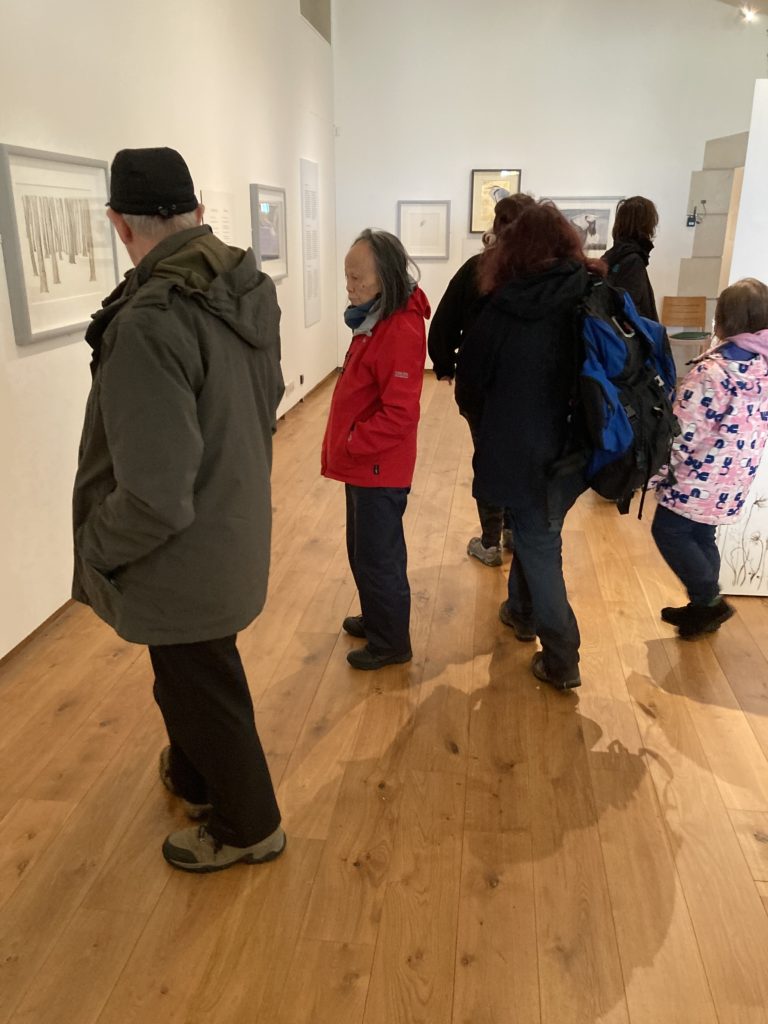
Joy
Jackie Morris can walk to the exhibition in St Davids from her studio nearby, and often does. Along the way she can see many of the species that inspire her and which fly beautifully through her work.
There’s a barn owl than hunts the fields behind her studio at twilight and flocks of small birds busily empty the feeders outside the cottage.
She likes ravens a lot, enjoying the way they are so playful, how they enjoy tumbling through the sky.
‘I find joy in every flight. I love the way in which they snag my eyes. This morning I saw a flock of starlings and they’re so tiny in the sky but you know that’s a starling , by the shape of it, by the flight of it, by the group of it.’
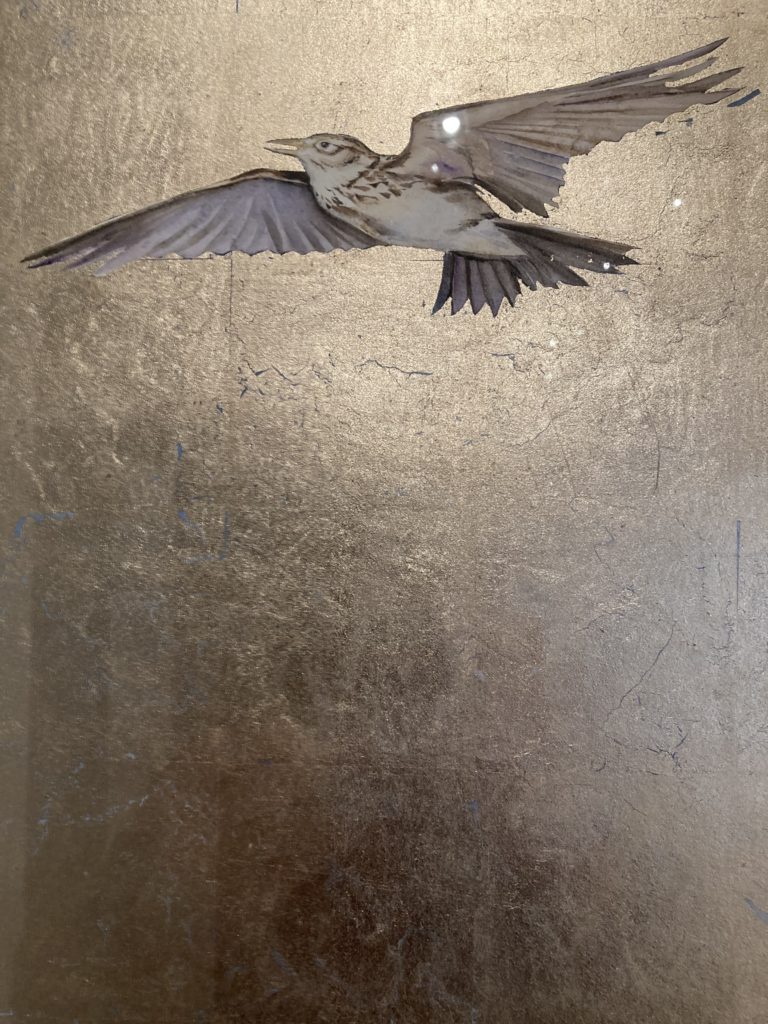
Iconic
There’s a lot of gold in the works, some of them are simply flecked with it while others set the subject of the artwork against a rich gold background.
Jackie explains: ‘I wanted to make icons like you see of saints but my religion is wild and free and usually has feathers. When I was working on this book was I went up to St Davids airfield where there are skylarks everywhere but when I was working on the wren I went down to Whitesands and there was a tiny wren hopping around under my van as if to say go back to the studio. It was a strange place to find the bird and this has happened over and over again. I was recently working on a white-tailed sea eagle for a new book when a friend said “You’ll never guess what I saw down the road…”
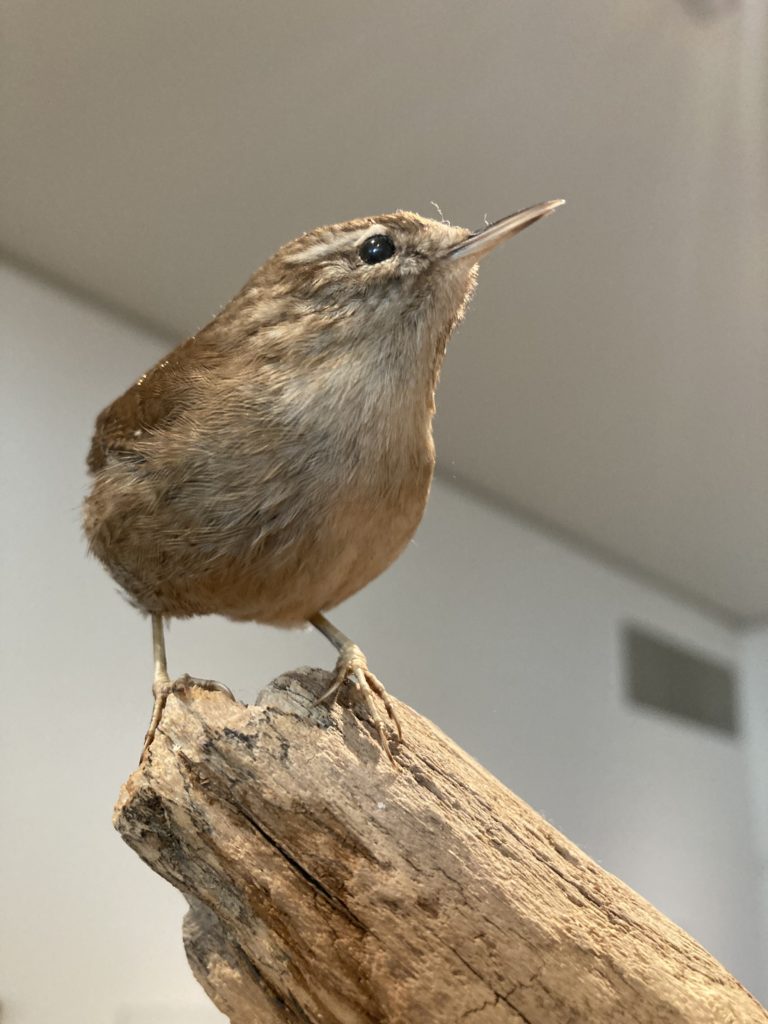
The skylarks that inspire Jackie Morris are found on former farms such as Llechell, Trefodlan and Llanwngar that themselves disappeared when they were requisitioned at the start of World War Two to create the airfield.
Now the land is in part a large hay meadow where the birds can nest on the ground safely hidden by long grasses and there are now twice as many as there used to be.
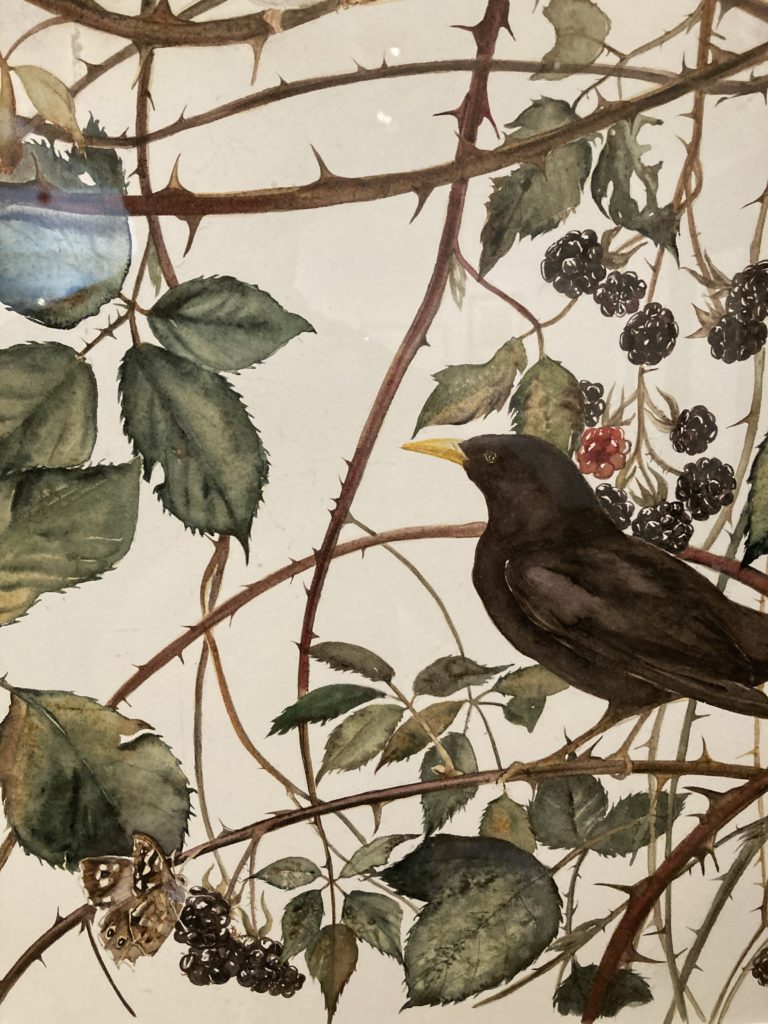
Essential
The works on show in the St Davids exhibition are arresting, beautiful and decorative, full of the tangled patterns of briar bushes or the innate colour schemes of birds and animals.
But there is also something essential about them, as the artist tries to get to the very heart of a living thing.
As Jackie puts it: ‘What I’m trying to do when I’m painting something like the kingfisher or any creature is to catch something of their soul in the image that I’m painting. And it’s so hard and I never feel like I succeed. It’s not soul-stealing, it’s trying to see something beyond the physical into something else, something soulful.’
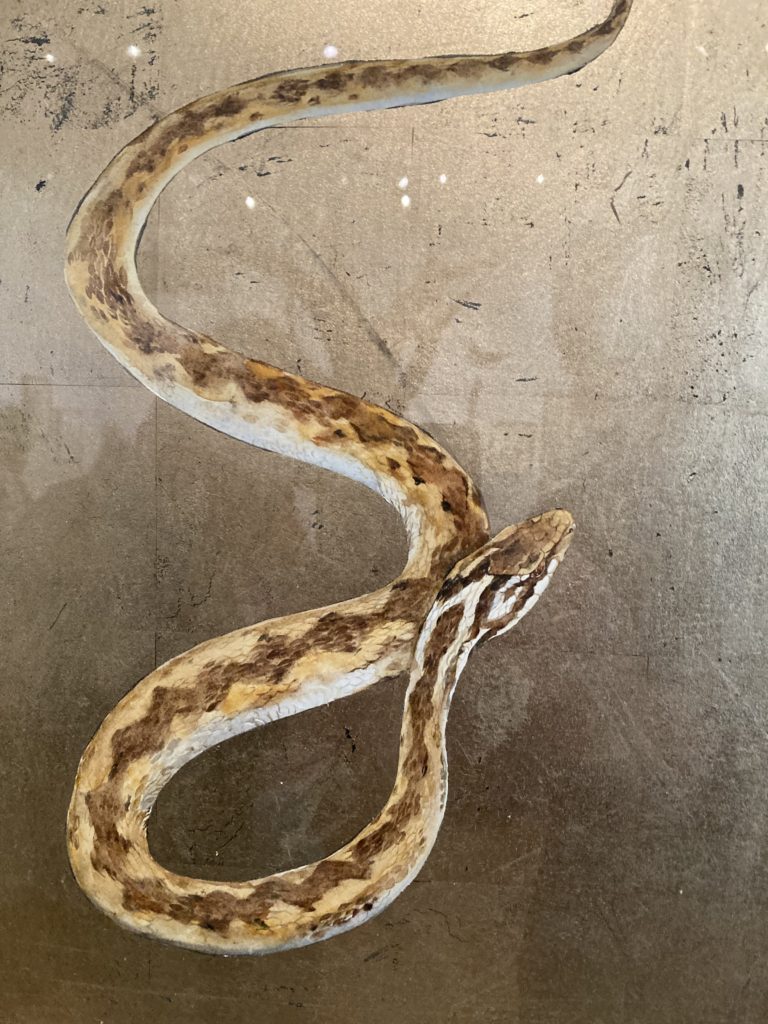
No theme park
Jackie’s relationship with nature runs very deep, as you can see from her studies of adders and blackbirds, stalking herons and ascending larks .
‘You hear the phrase ‘I’m inspired by nature’ a lot but I don’t feel that I’m inspired by nature. I feel it is our life support system and that is the narrative that we need to have now. It’s not a theme park that you can go out into, you can find nature in the middle of a city because we’re a part of it and it’s life support. And that’s what is so urgent and so misunderstood by the people who are in power, who can make laws in order to protect it. And yet are doing completely the opposite, it’ so frustrating.’
Frustrated as she might be by the ineptitude of politicians – there is ample joy in her work. Jackie Morris and Robert Macfarlane’s book Lost Words helps spread some of that around.
Much of it comes from the nature all she sees every day.
‘Ravens fly over my studio, wrens thread through the blackthorn trees outside and magpies build their nest in the topmost tangles of the branches. The sights and sounds of all these are the inspiration for the book. It is a celebration, a prayer to the wild.’
Geiriau Diflanedig/The Lost Words runs at Oriel y Parc at St Davids until 2nd June, 2024 and Yr Ysgwrn, Trawsfynydd, currently for group and school visits only.
Support our Nation today
For the price of a cup of coffee a month you can help us create an independent, not-for-profit, national news service for the people of Wales, by the people of Wales.






